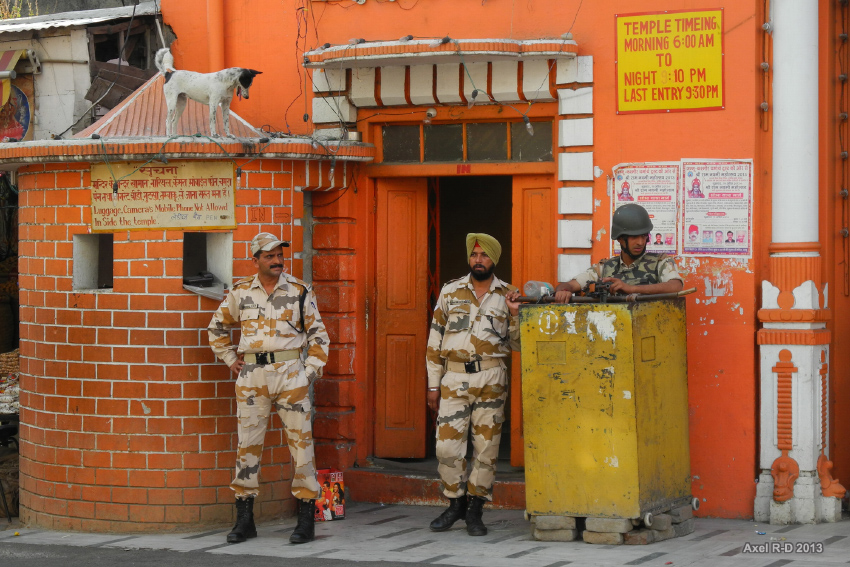 Photo Credit: Flickr user axelrd
Photo Credit: Flickr user axelrd
Crisis in the Himalayas: Heating up in Kashmir
With so much headline grabbing news, a deeply concerning development has gone largely unnoticed. This week, India revoked Article 370, a provision which gives the Kashmir region special status allowing the region to largely self govern. While it may sound like an inconsequential bureaucratic procedure, the move has major ramifications for the stability of the region. Nuclear armed countries, India and Pakistan, have long fought over the border region but this is one of the most extreme moves made by either side in recent years. As India masses troops in the region, tensions seem doomed to boil over. Hopefully, this current dispute will resolve itself peacefully but the world should not expect that to be the case forever. Particularly when the looming threat of climate change is predicted to only make matters worse.
Background:
The Kashmir region has long been contested. There have been three major Indo-Pakistani wars in 1947, 1965, and 1999 with a tentative cease-fire since 2003. Both Pakistan and India claim the region as their own due to a lack of clarity when the region was split into two distinct nations in 1947. There have been attempts in recent years to begin new negotiations to settle the dispute, but none have survived. India continued until this week to claim ownership but simultaneously allow the region a special state status of semi-autonomy. Unfortunately, much of the population would rather be a part of Pakistan or completely independent. Unlike the rest of India, the region is majority Muslim and the region suffers from both high unemployment and human rights complaints. All of this adds kindling to an already hot conflict.
Current Situation:
The current round of violence began in 2016 after the death of a charismatic, young militant Burhan Wani. This sparked widespread protests and a series of “tit for tat” attacks. One of the most deadly attacks was the suicide attack on February 14th, 2019 which killed over 40 Indian soldiers. India responded with a series of airstrikes and tensions have been simmering since.
Much of the violence stems from insurgent groups in the region and across the border in Pakistan. As noted by ASP’s Ottavia Credi in May, over the last 30 years, “Pakistan has taken advantage of terrorist organizations residing in its territory to attack India, without taking responsibility for the assaults.” India remains rightly concerned by the risk of insurgent groups on its border and the potential for loose nuclear weapons to end up in the wrong hands. Such fears continuously stoke tension between the two nations.
Prior to the announcement of the revoking of Article 370, India sent “thousands of additional troops to the region, imposing a curfew on parts of it, shutting down telecommunications and arresting political leaders.” Pakistan’s Prime Minister Imran Khan has vowed to “fight” the change in status through traditional institutions and recently downgraded Pakistan’s diplomatic relations with India, cutting off all bilateral trade..
The European Union and much of the rest of the world have condemned the move, calling for both countries to avoid further escalation.
Why it matters:
While previous wars have been resolved before nuclear weapons were employed, the U.S. and the rest of the world should be deeply concerned about this new development. This is one of the most aggressive policy moves in recent years. It is also a uniquely challenging time in the region. India remains concerned about a potential peace agreement in Afghanistan, one that could give the Taliban more authority. In addition, the U.S. isn’t the mediating presence it used to be. President Donald Trump’s offer to assist in resolving the Kashmir dispute only agitated India further. With new developments in Afghanistan and without potential mediators, conflict is increasingly likely.
Further, as the effects of climate change beginning to mount, both countries will continue to face rising stress at home. India has seen increasingly extreme and deadly heatwaves, growing from 9 in 2015 to 23 in 2019. Over 6,000 people have died since 2010 due to heatwaves. Pakistan is suffering from similar impacts. Recent studies show temperatures increasing 7.2 degrees Fahrenheit by 2100. One of the most water stressed countries in the world, it’s predicted to be a water scarce country by 2035, only about 15 years from now. ASP’s Laura Sigelmann provides a comprehensive review of new studies which suggest that into the future, temperatures across South Asia could push the limits of human survivability.
As temperatures rise, crops die, and pressure mounts domestically both countries may employ a common diversion tactic. By focusing on the Kashmir region, both countries redirect anger at home towards their neighbors. It is a slippery slope once tensions begin to ratchet up.
Hopefully India and Pakistan will once again avoid major conflict, but the world should not count on it. The region lacks a mediating influence and changing political and environmental climates are only making matters worse. India must deescalate tensions now if they want to avoid further instability and potentially a full-blown war.





